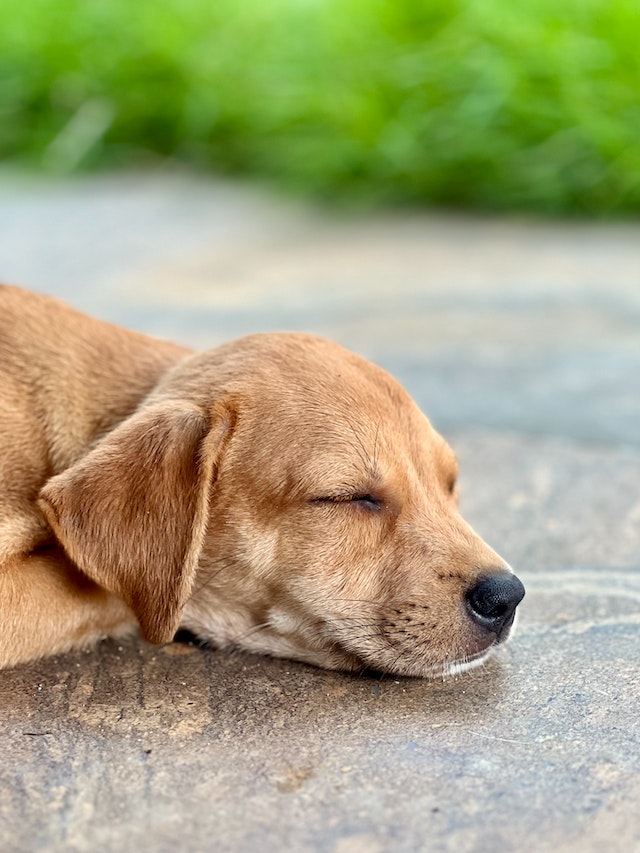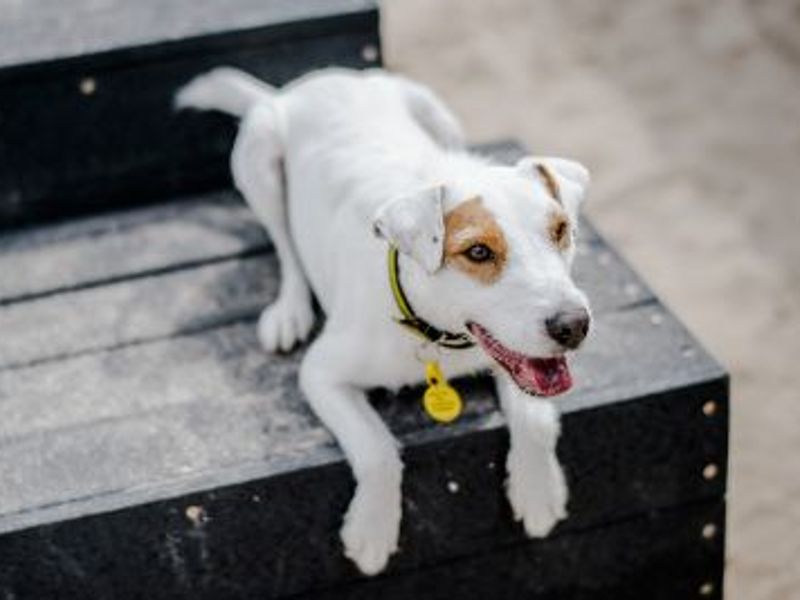Calm the Chaos: Train Your Exuberant Dog to Relax
Understanding Your Exuberant Dog's Behavior
Signs of an exuberant dog
For pet parents, identifying the signs of an exuberant dog can lead to a better understanding of their furry friend's behaviour. These dogs often exhibit high energy levels, excessive jumping, tail wagging, and playful behaviour, even in normally calm situations. They may also be inclined to greet people by jumping up on them and struggle to contain their excitement during playtime. Understanding these signs can help owners manage their dog's exuberance and prevent any potential unwanted behaviors.
Reasons for exuberant behaviour
Exuberant behaviour in dogs can stem from various factors, including genetics, lack of proper socialization, or even boredom. Some dogs are naturally more exuberant due to their breed tendencies, while others may exhibit such behaviour as a result of not having enough outlets for their energy. Lack of mental stimulation or physical exercise can contribute to a dog's exuberance, leading them to express their pent-up energy in boisterous ways. Understanding the underlying reasons for a dog's exuberant behaviour is crucial in addressing it effectively and providing appropriate outlets for their energy.
By recognizing the signs of an exuberant dog and understanding the reasons behind such behaviour, pet parents can take proactive steps to manage their furry friend's energy levels and ensure a harmonious relationship with their beloved canine companion.

Importance of Training Your Exuberant Dog
Benefits of training for relaxation
As a pet parent, training your exuberant dog plays a crucial role in promoting relaxation and calmness in your furry friend. Through structured training sessions, you can teach your dog how to channel their energy effectively and respond to cues that signal relaxation.
Training exercises such as obedience training, impulse control, and desensitization to stimuli can help your dog learn to manage their exuberance and behaviour in various situations.
Relationship between training and behaviour
Training your exuberant dog not only enhances their behaviour but also strengthens the bond between you and your furry companion. By establishing clear communication and boundaries through training, you can create a harmonious relationship built on trust and mutual understanding. Consistent training reinforces positive behaviours and helps address any unwanted behaviours that may arise due to your dog’s exuberance.
By actively engaging in training your exuberant dog, you can create a positive environment that promotes relaxation, mental stimulation, and overall well-being for your beloved furry friend.

Creating a Relaxation Routine
Establishing a calm environment
As a pet parent, your role in training your exuberant dog is vital in fostering a serene and tranquil atmosphere for your furry companion. Setting up a calm environment at home helps your dog feel secure and relaxed, making it easier for them to respond positively to training exercises. Keep the training area free from distractions and create a peaceful space where your dog can focus on learning and practising relaxation techniques.
Incorporating relaxation training into daily activities
When it comes to training your exuberant dog, consistency is key. Integrate relaxation training into your daily routine by incorporating short sessions throughout the day. Implement breathing exercises, gentle massages, or guided relaxation techniques to help your dog unwind and destress.
By making relaxation training a part of your daily activities, you can reinforce positive behaviors and cultivate a sense of calmness and balance in your furry friend's life.

Positive Reinforcement Techniques
Reward-based training methods
When working with your enthusiastic dog, using positive reinforcement techniques can be highly effective in promoting desired behaviours. Encourage good behaviour by rewarding your furry friend with treats, praise, or toys whenever they exhibit calmness or follow commands correctly. This positive feedback helps strengthen the bond between you and your pet while motivating them to continue displaying the desired behaviours.
Using treats and praise effectively
Treats and praise are valuable tools in reinforcing positive behaviours in your exuberant dog. Choose high-quality treats that your pet loves and reserve them solely for training sessions to make them more enticing. Combine treats with verbal praise, gentle petting, or a cheerful tone to let your dog know they are doing a great job.
Consistency and timing are crucial when using treats and praise, so make sure to reward your furry friend promptly after they exhibit the desired behavior to reinforce the connection between the action and the reward.

Exercise and Mental Stimulation
Importance of physical activity
When you are working with your enthusiastic dog, ensuring they receive enough physical exercise is crucial for their overall well-being. Regular walks, play sessions, and engaging activities help your furry friend release pent-up energy, maintain a healthy weight, and prevent boredom-related behaviors. By incorporating sufficient exercise into your dog's routine, you can promote their physical health and provide an outlet for their energy in a positive way.
Mental exercises to promote relaxation
In addition to physical activity, incorporating mental stimulation exercises into your dog's daily routine can promote relaxation and prevent behavioural issues. Engage your exuberant dog with puzzle toys, obedience training sessions, or scent work activities to keep their mind sharp and focused. Mental exercises challenge your furry friend's cognitive abilities while providing a calming effect by redirecting their energy towards a task.
By combining physical exercise with mental stimulation, you can help your dog maintain a balanced and contented demeanor.

Desensitization and Counterconditioning
Techniques to reduce triggers of exuberant behavior
When you are working with your enthusiastic dog, it's important to address triggers that may lead to exuberant behavior. Desensitization involves gradually exposing your furry friend to the trigger at a low intensity, allowing them to become more comfortable over time.
For example, if your dog gets overly excited when meeting new people, you can start by introducing them to individuals from a distance and rewarding calm behaviour. This process helps your dog associate the trigger with positive experiences, reducing the likelihood of exuberant reactions.
Changing your dog's response to stimuli
By implementing counterconditioning techniques, you can shift your dog's response to stimuli that typically elicit exuberant behavior. This involves pairing the trigger with a positive reward, such as treats or praise, to create a new, desirable association. For instance, if loud noises trigger excitement in your dog, you can provide treats whenever a noise occurs to build a positive association.
Over time, your furry companion will learn to remain calm in the presence of such stimuli, thereby reducing exuberant reactions and promoting a more relaxed demeanor.

Relaxation Training Tools
Dog calming aids and products
When working with your exuberant dog to reduce triggers of excitement, you can consider using various dog calming aids and products to facilitate relaxation. Calming aids such as pheromone diffusers, anxiety wraps, or calming supplements can help soothe your furry friend during stressful situations. These products work by promoting feelings of security and comfort, aiding in reducing your dog's exuberant reactions to triggers.
Creating a safe space for relaxation
Another effective way to assist your enthusiastic dog in achieving a more relaxed state is by establishing a safe space dedicated to relaxation. This space can be equipped with your dog's favourite toys, a comfortable bed, and soothing music or white noise to create a calming environment.
Encouraging your dog to retreat to this safe space during times of excitement or stress can help them unwind and decompress, promoting a sense of tranquillity and reducing exuberant behaviour.

Celebrate Your Dog's Progress
Recognizing achievements in relaxation training
As a dedicated pet owner, it's crucial to acknowledge and celebrate the small victories in your dog's relaxation training journey. Whether it's successfully staying calm during a trigger situation or responding positively to a relaxation technique, each achievement is a step forward in your shared goal of a more relaxed and well-balanced four-legged companion.
Building a strong bond with your exuberant dog through training
By embarking on the path of relaxation training with your energetic and enthusiastic canine friend, you are not only helping them manage their excitement but also strengthening the bond between you both. Through consistent and patient training sessions, you are building trust, communication, and understanding with your dog, creating a harmonious relationship based on mutual respect and cooperation.
| Traditional Training Methods | Relaxation Training Methods |
|---|---|
| Focus on obedience commands and tricks | Emphasize on creating a calming environment |
| Use treats as rewards for good behaviour | Incorporate soothing products like pheromone diffusers |
| May involve correction techniques | Focus on positive reinforcement and relaxation techniques |
Dealing with setbacks in training
It's natural to face challenges and setbacks in your dog's relaxation training. Remember to stay patient, stay consistent, and adapt your approach as needed. With perseverance and the support of professionals, if required, you can navigate through these obstacles and continue helping your dog progress towards a calmer and happier state.

